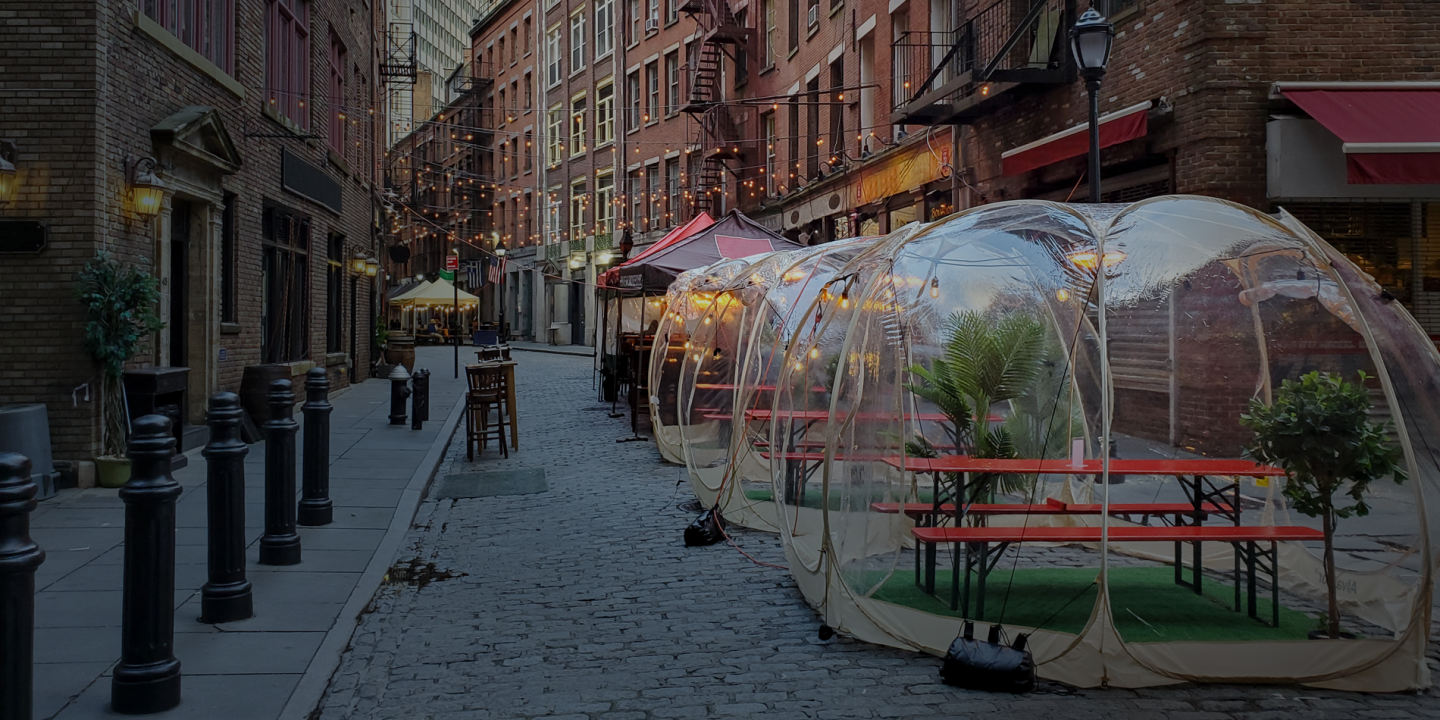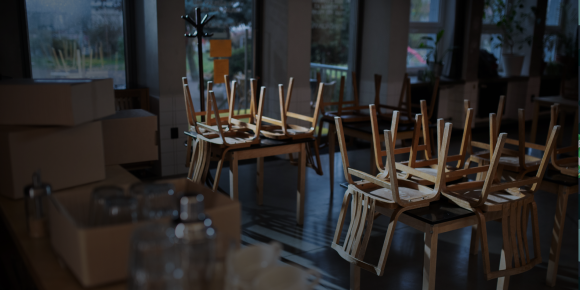In March 2020, the pandemic caused a massive shift in consumer behavior. Almost overnight, the world went from dining out for happy hours, brunches, and birthday dinners to cooking almost every meal at home.
This had a drastic impact on the restaurant industry. Roughly 10% of U.S. restaurants closed permanently in 2020, resulting in $240 billion in losses.
But while some consumers are starting to return to their favorite restaurants, consumer behavior has changed, and restaurants need to evolve with it to keep diners coming back.
Here are three pandemic-era trends that we expect to stick around long term.
Eating at Home
Though this may sound contradictory, eating restaurant food from the comfort and safety of home took off during the pandemic. This is made possible by options like drive-thru lanes, third-party delivery, and curbside pickup.
Drive-Thru Windows
When eating indoors went on hold, many fast-food chains with drive-thru windows saw lines of cars stretching for blocks down the street. In fact, drive-thru orders accounted for 44% of off-premises orders at QSR chains in 2020. While this increased popularity led to slower drive-thru times on average, many chains added lanes throughout 2020 and 2021, like Starbucks, Shake Shack, Panera Bread, and more.
Third-Party Delivery
Before the pandemic, less than 5% of overall restaurant spending came from third-party delivery services, but now the industry generated over $26 billion in 2020, peaking at 15% of restaurant spending. Even from fall 2020 to fall 2021, sales for meal delivery services grew 17%, and revenue is expected to almost double by 2025. Despite this, many consumers prefer to order directly from a restaurant instead of through third-party services if given the option.
Curbside Pickup and Takeout
Many consumers enjoyed the convenience of being able to call ahead or order online and pick up their food without waiting or interacting with others. This wasn’t a difficult change to implement for many restaurants, which helped spur its success.
Outdoor Dining
With limited seating enforced inside restaurants, many expanded outward, setting up tables on sidewalks, in parking lots, and on patios. Once winter hit, some restaurants in locations too cold to eat outside turned to outdoor dining bubbles.
These spaces keep rain and snow away, can be heated, and offer some privacy for diners. However, there are other expenses to consider—both monetary, such as the cost of purchasing and heating the bubbles, and the cost of the time it takes to clean them or obtain permits to use them.
Despite this, it’s likely restaurants will continue to use tents like these, just like restaurants in warmer climates will continue expanding and using their outdoor patio spaces.
Alcohol to Go
Before the pandemic, most bars and restaurants weren’t allowed to sell alcohol to go. However, once in-person dining shut down, many states temporarily changed these restrictions to offer restaurants a lifeline. And now, due to the popularity of to-go cocktails, many states are making it permanently legal.
Even as many restaurants still have reduced indoor capacities, selling off-premises alcohol may continue to provide much needed support to many businesses. For restaurants owners hoping to differentiate their alcohol offerings from those of liquor stores, it’s important to position your brand as a one-stop-shop for both dinner and drinks, especially unique ones that can’t be purchased at a liquor store.
The Bottom Line
Customer behavior is evolving as comfort levels and the virus change. By understanding what customers want, your restaurant will be better prepared to weather the uncertain times ahead.
Curious about more COVID-era trends? Here are three more we expect to stick around.


